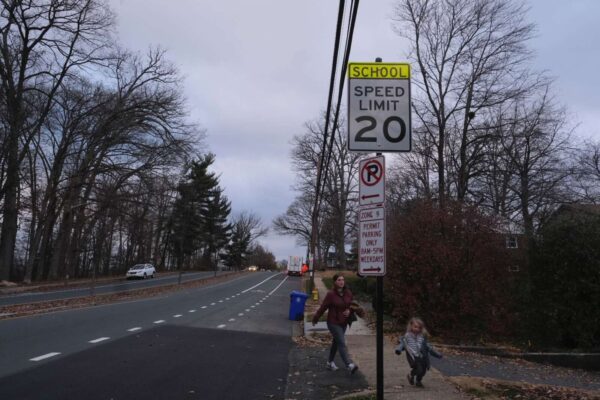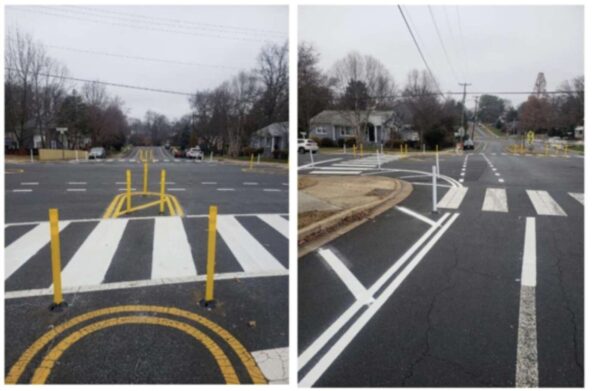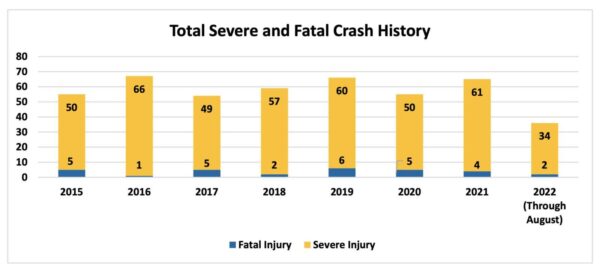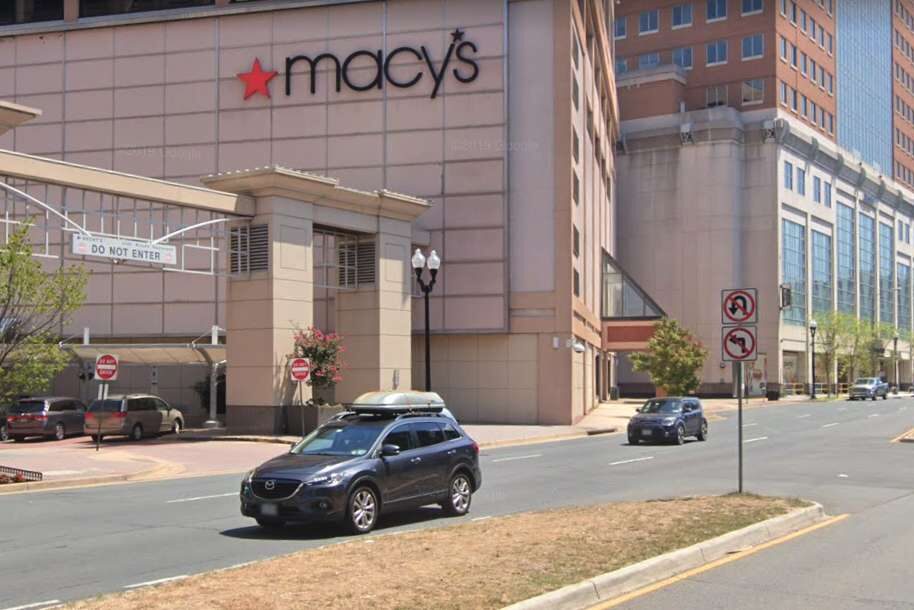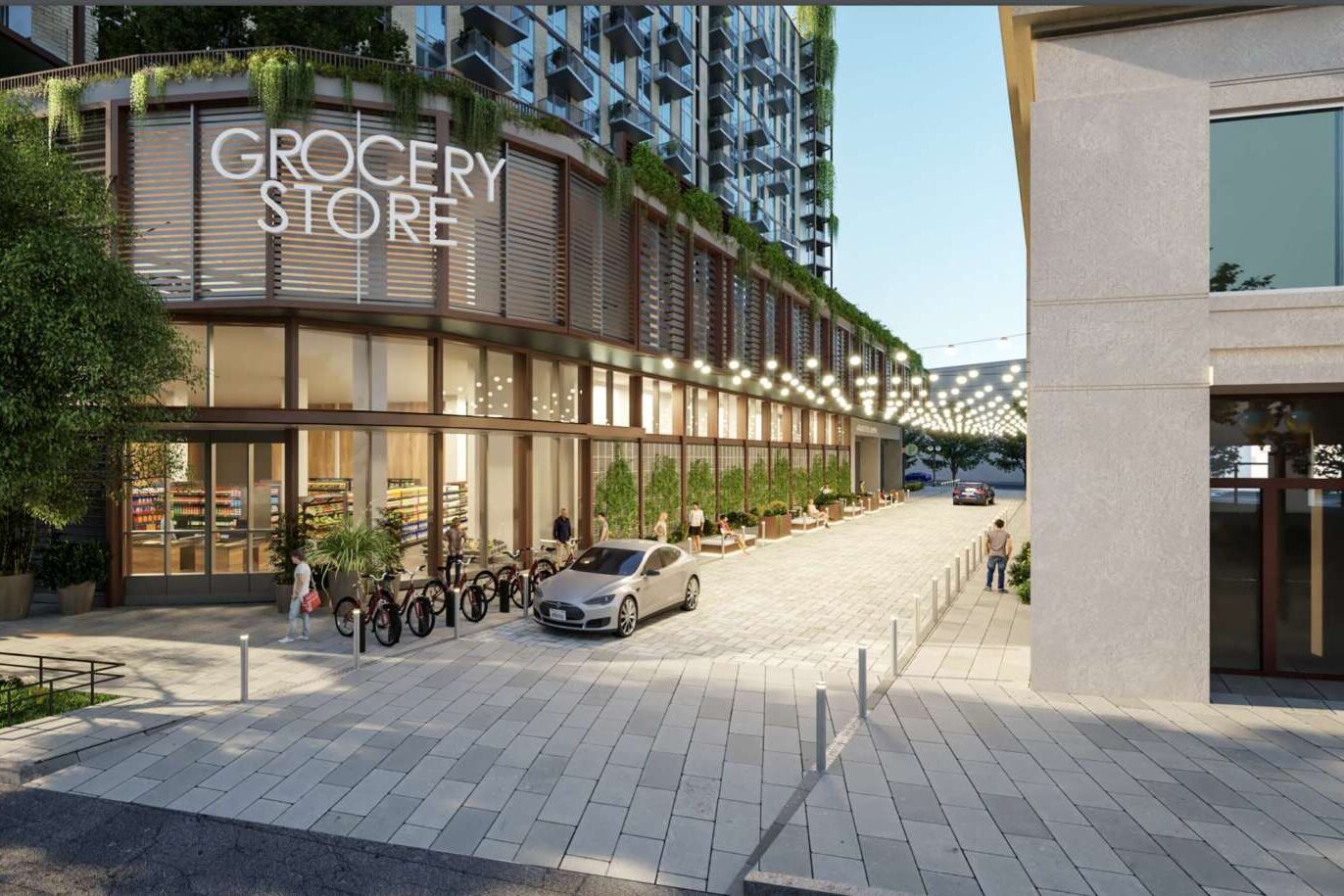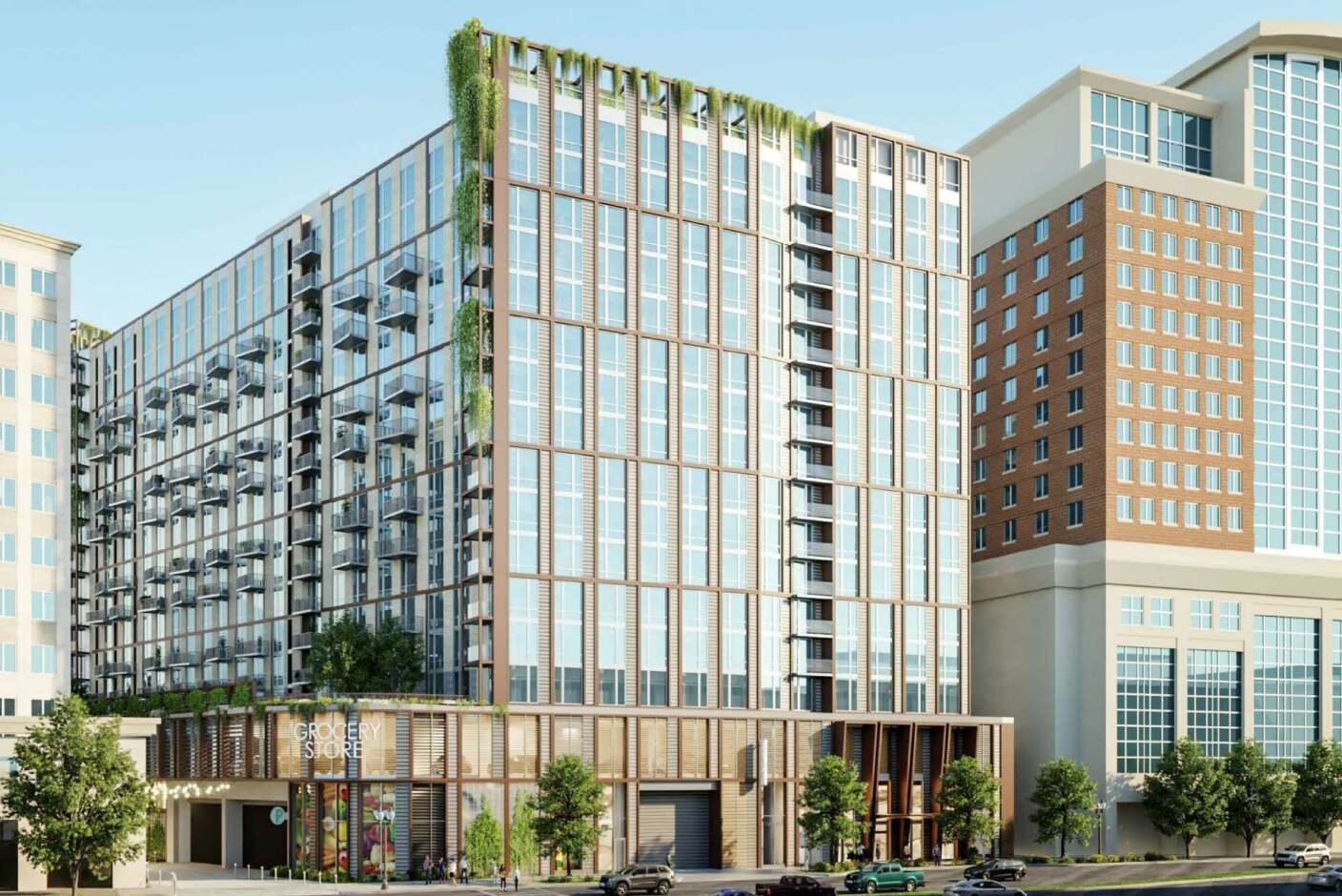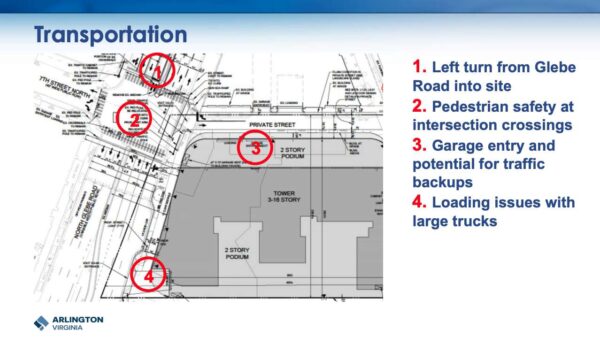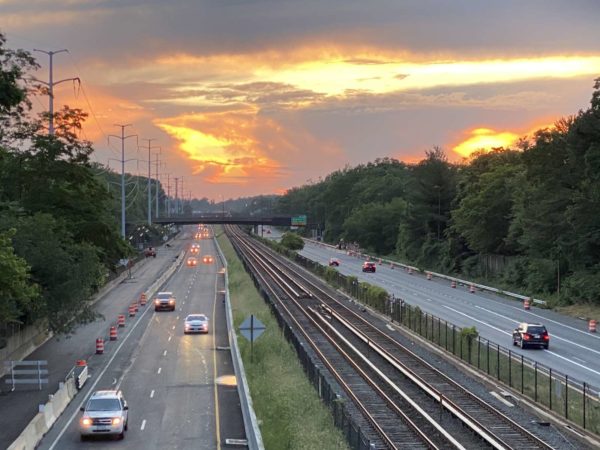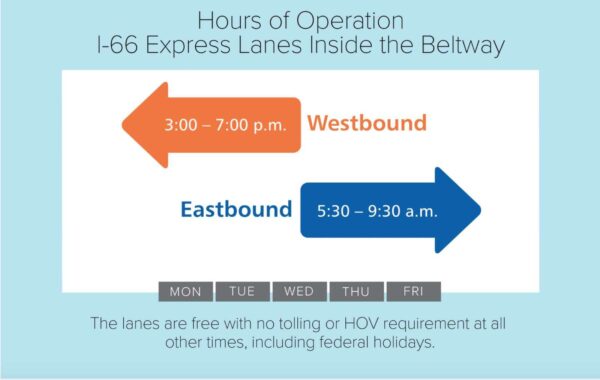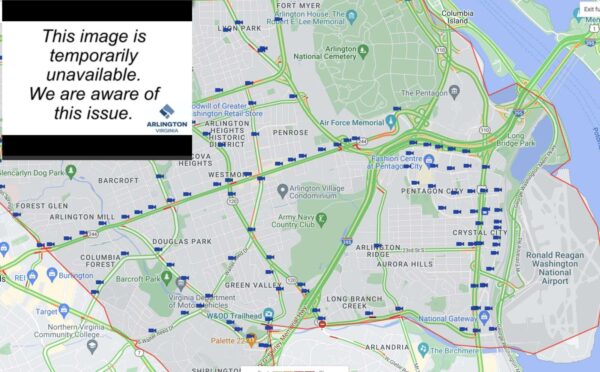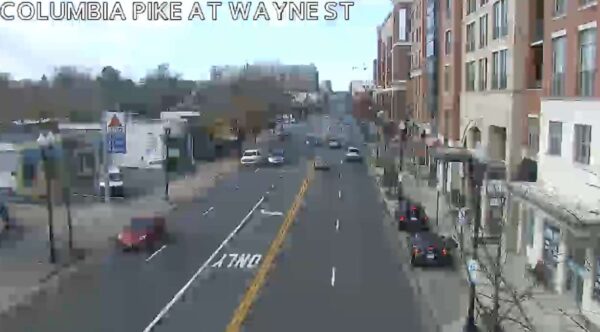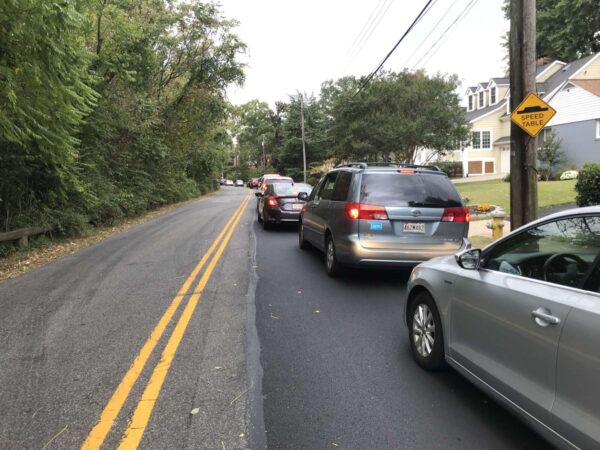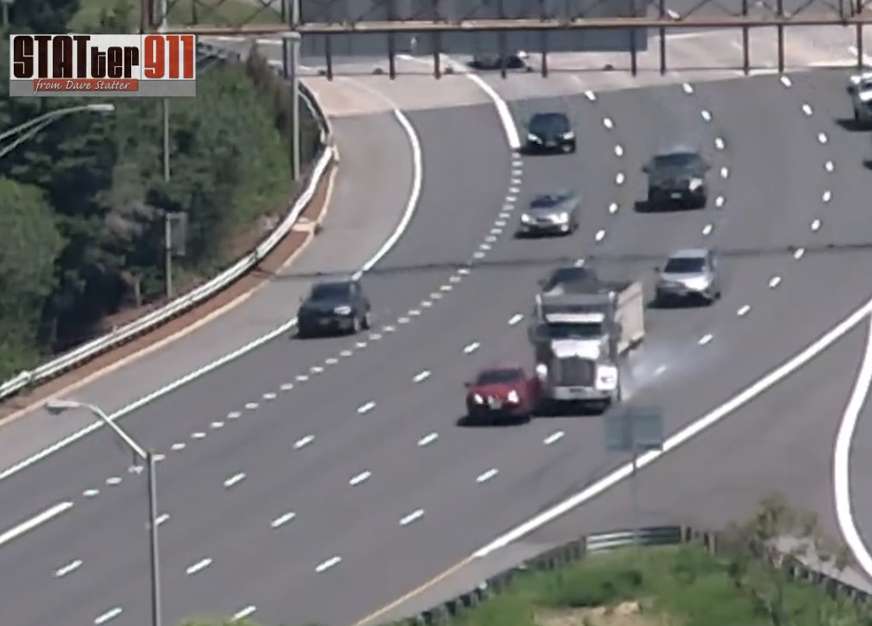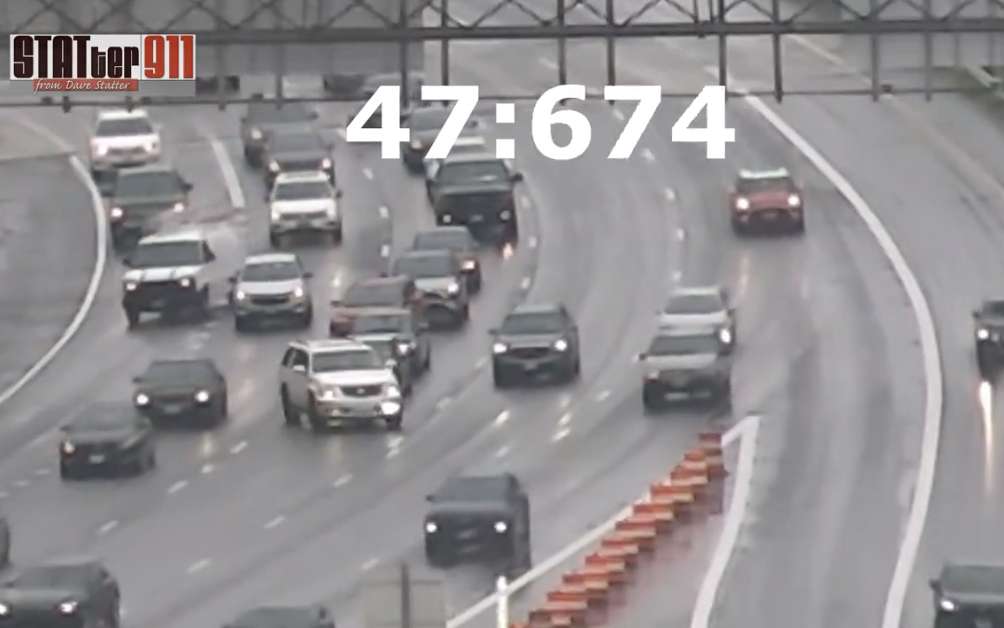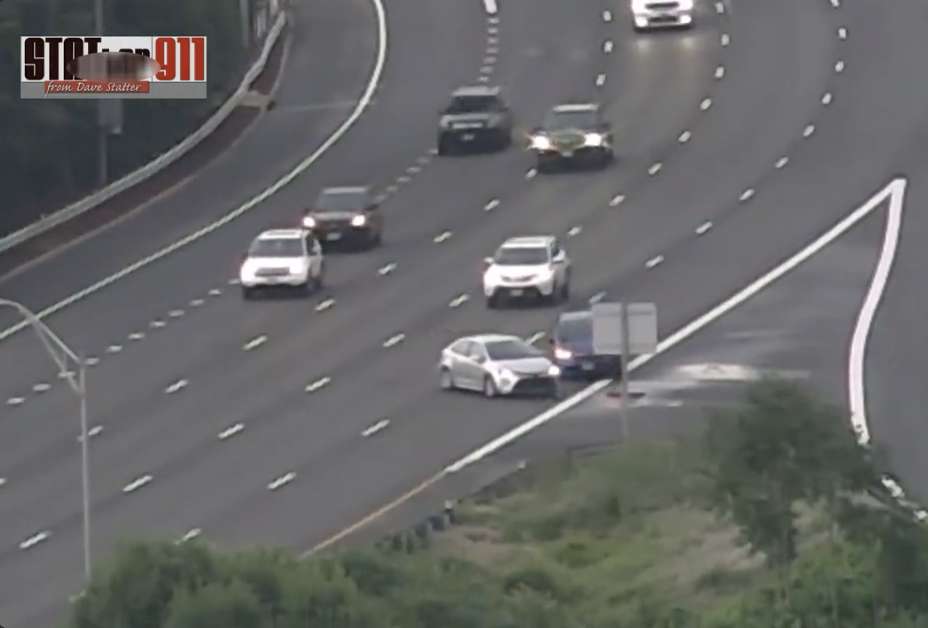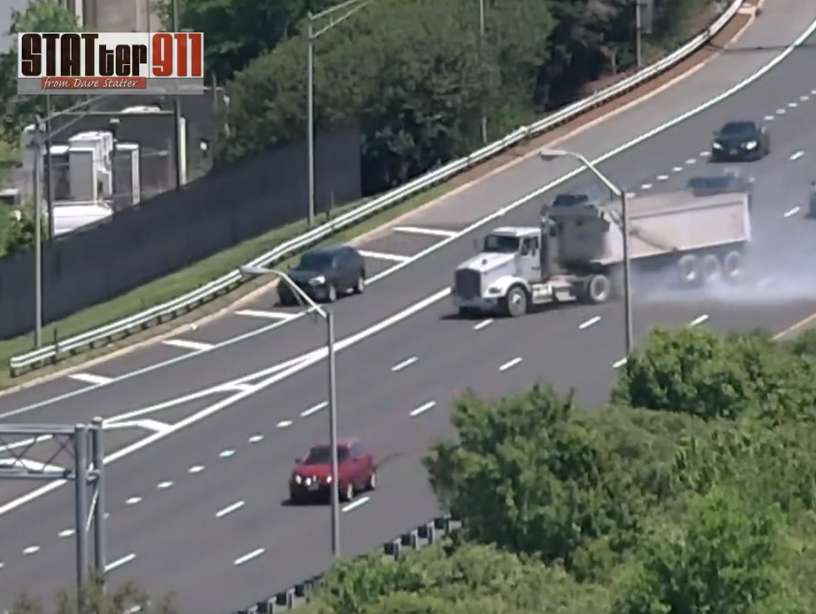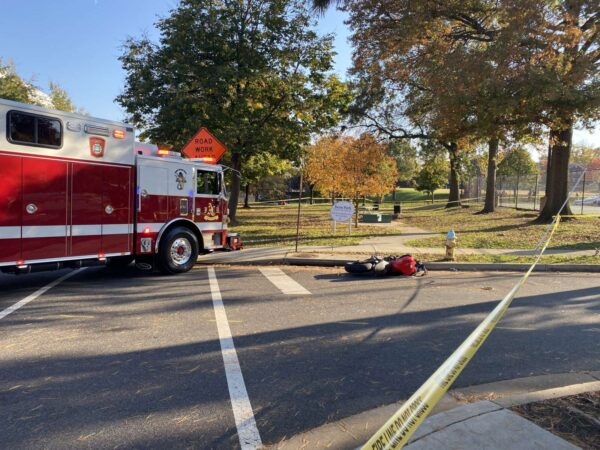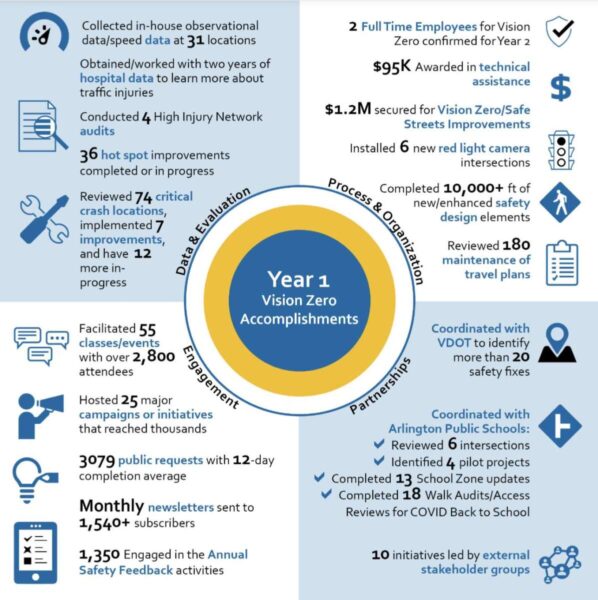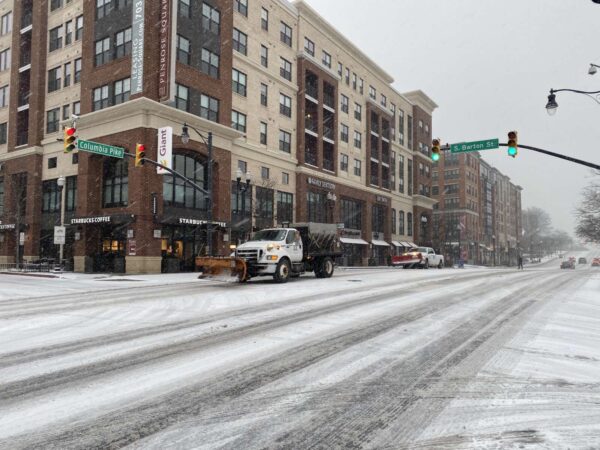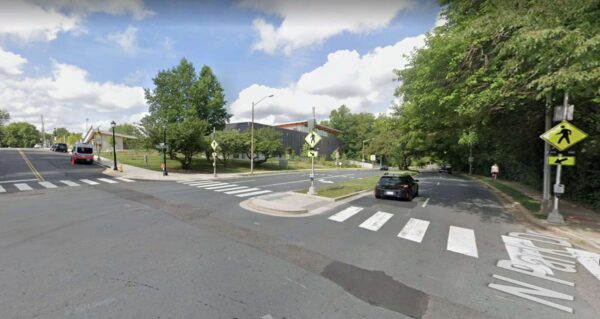
Safety signage and markings are coming this spring to a long-troubled intersection near Lubber Run Community Center.
The intersection of N. Park Drive and N. George Mason Drive in the Arlington Forest neighborhood will be getting updated signage and street markings reading “SLOW SCHOOL XING” within the next few months, a county official has confirmed to ARLnow.
“Marking should be installed this spring, depending on the weather,” Dept. of Environmental Services (DES) spokesperson Claudia Pors wrote in an email.
The county is also aiming to get a traffic signal installed there, said Pors, but it would have to be funded in the next Capital Improvement Plan. There’s not yet a timeline for when that could happen and when a signal might be installed.
This is all in addition to the Rectangular Rapid Flashing Beacons that were installed there about two years ago.
The N. Park Drive and N. George Mason Drive intersection has long concerned neighbors due to the high rate of crashes there.
In October, residents told ARLnow that speeding drivers and the four-lane expanse made the intersection particularly dangerous. It’s also tricky for drivers on N. Park Drive — including those going to and coming from the Lubber Run Community Center — trying to cross or turn left on George Mason.
That’s in addition to the presence of Barrett Elementary School and hundreds of students one block away.
In the fall, neighbors provided testimony and photos to ARLnow that showed cars jumping curbs, vehicles ending up in the woods, and a near-miss between a bus and a motorcycle at the intersection.
DES said at the time that since the intersection had not been identified as part of its Vision Zero High-Injury Network corridor or Hot Spot program, it wasn’t eligible for any further safety upgrades beyond the flashing beacons. DES did promise to investigate further the possibility of adding more, though.
Data collected by the county since then has confirmed the concerns of neighbors and led to the addition of these new features at N. Park Drive and N. George Mason Drive.
“Crash analysis revealed there were four visible injury angle crashes within 18 months (April 2021 – Oct 2022) at this intersection, which escalated the importance of safety improvements,” Pors said.
The intent was always to review “the safety and operations of this intersection post completion of the Lubber Run Community Center,” she also noted.
The news of the updated signage, markings, and, potentially, a traffic signal was included in a recent edition of the Arlington Forest Civic Association newsletter, a reader shared with ARLnow.
“That’s huge for the neighborhood. I was surprised they didn’t put one in when they built the new community center,” the reader said.
Hat tip to Henry Grey


